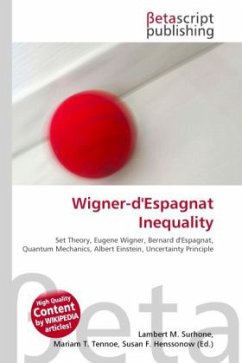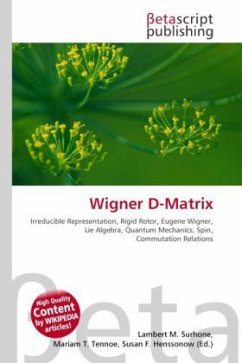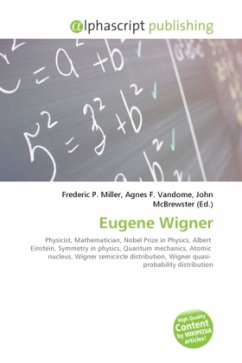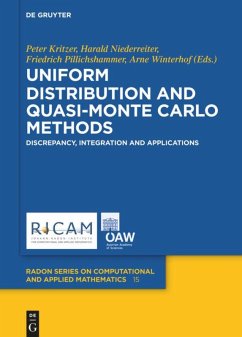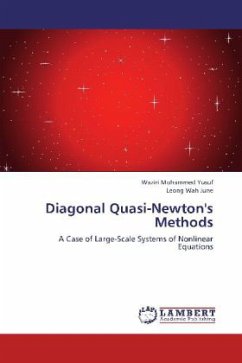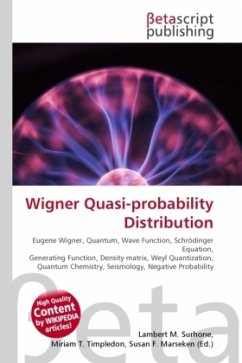
Wigner Quasi-probability Distribution
Versandkostenfrei!
Versandfertig in 6-10 Tagen
26,99 €
inkl. MwSt.

PAYBACK Punkte
13 °P sammeln!
High Quality Content by WIKIPEDIA articles! The Wigner quasi-probability distribution (also called the Wigner function or the Wigner Ville distribution) is a special type of quasi-probability distribution. It was introduced by Eugene Wigner in 1932 to study quantum corrections to classical statistical mechanics. The goal was to supplant the wavefunction that appears in Schrödinger's equation with a probability distribution in phase space. It is a generating function for all spatial autocorrelation functions of a given quantum-mechanical wavefunction (x). Thus, it maps on the quantum density m...
High Quality Content by WIKIPEDIA articles! The Wigner quasi-probability distribution (also called the Wigner function or the Wigner Ville distribution) is a special type of quasi-probability distribution. It was introduced by Eugene Wigner in 1932 to study quantum corrections to classical statistical mechanics. The goal was to supplant the wavefunction that appears in Schrödinger's equation with a probability distribution in phase space. It is a generating function for all spatial autocorrelation functions of a given quantum-mechanical wavefunction (x). Thus, it maps on the quantum density matrix in the map between real phase-space functions and Hermitian operators introduced by Hermann Weyl in 1927, in a context related to representation theory in mathematics (cf. Weyl quantization in physics). In effect, it is the Weyl Wigner transform of the density matrix, so the realization of that operator in phase space. It was later rederived by J. Ville in 1948 as a quadratic (in signal) representation of the local time-frequency energy of a signal.



